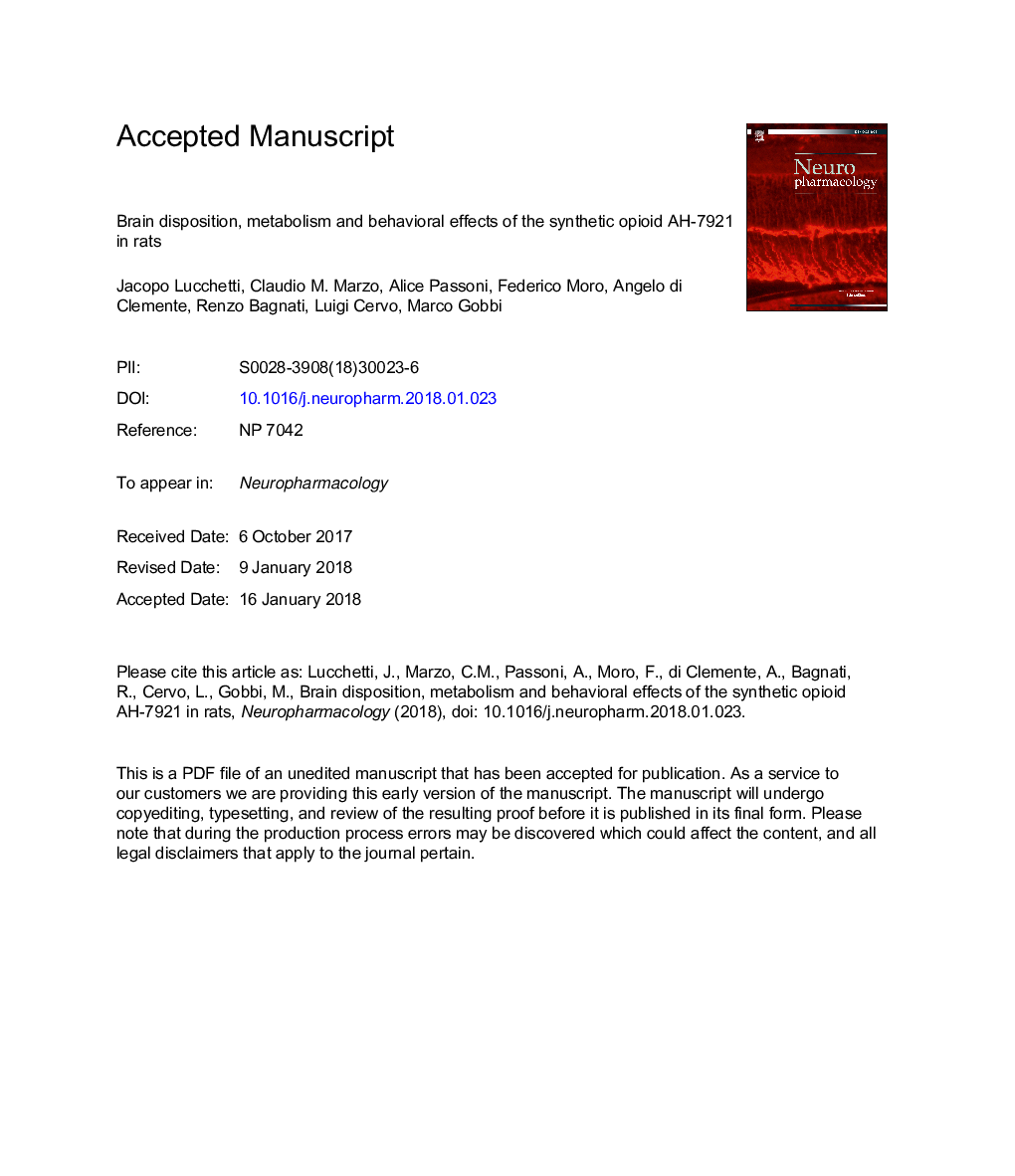| Article ID | Journal | Published Year | Pages | File Type |
|---|---|---|---|---|
| 8516959 | Neuropharmacology | 2018 | 40 Pages |
Abstract
Tolerance was observed after seven daily doses, when the compound's analgesic effect was 14% lower than after the first dose; since brain concentrations did not decrease in parallel, the development of pharmacodynamic tolerance can be suggested. However, pharmacokinetic tolerance is also likely, as brought to light by the data after a dose challenge, given after a 48â¯h washout period from the 7th dose, showing a lower brain-to-plasma ratio. We also describe the rewarding effect of AH-7921 (conditioned place preference), suggesting a high risk of addiction in humans.
Keywords
LLOQHCOOHMPEACNMRMCPPCIDi.p.ESItmaxTICHQCULOQCmaxFTMSMQCLQCAUCm/zNPst1/2Rewarding effectCollision-induced dissociationinternal standardFormic acidpeak concentrationAnalgesiaanalysis of varianceANOVAConditioning place preferencetotal ion currentupper limit of quantificationlower limit of quantificationMaximum possible effectintraperitonealBBBFourier-Transform mass spectrometryMass spectrometrymatrix factorPharmacokineticsMobile phaseNew psychoactive substanceblood-brain-barrierMetabolismMethanolarea under the curveEICMeOHMass-to-charge ratioHalf-lifehigh-performance liquid chromatographyHPLCelectrospray ionization
Related Topics
Life Sciences
Neuroscience
Behavioral Neuroscience
Authors
Jacopo Lucchetti, Claudio M. Marzo, Alice Passoni, Federico Moro, Angelo di Clemente, Renzo Bagnati, Luigi Cervo, Marco Gobbi,
